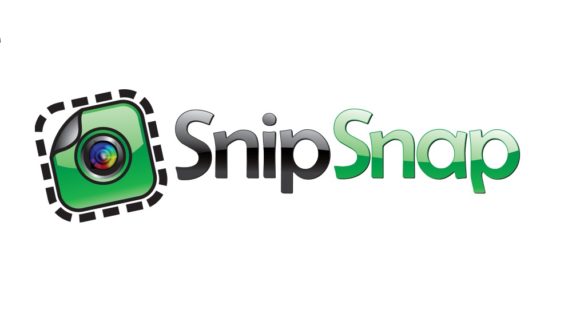
(Be sure to read this followup story: “Target, Others Tell SnipSnap to Cease and Desist”)
For a coupon app that boasts that it “works at most retailers,” retailers across the country are lining up in opposition to SnipSnap.
“We do not currently accept coupons via the SnipSnap app and are not working with the company,” says a Stop & Shop spokesperson. “We do not accept them,” Wegmans says flatly. “Digital reproductions of offers will not be accepted (such as using a mobile application to reproduce an image of an offer/coupon),” Kroger clearly states in its coupon policy.
So why are there currently a combined 595 coupons for these three grocery chains on the controversial coupon app? Why are some of them highlighted as “Staff Picks”? And why are users reporting up to an “88% success rate” using SnipSnap coupons at these stores that insist they won’t accept them?
SnipSnap is facing an increasing amount of scrutiny and skepticism, after some recent national media exposure shined the spotlight on the app a little more harshly than its owners likely anticipated.
Retailers reject SnipSnap’s “magic”
In a nutshell, SnipSnap allows users to take a photo of a paper coupon, upload it to the app, and, as SnipSnap explains, “the app works its magic to scan all of the printed text and images.” The uploaded photo is transformed into a new, clean, mobile-optimized bar code, and the coupon becomes available for all users to share (read much more about SnipSnap here: “SnipSnap Coupon App Comes Under Fire”).
SnipSnap CEO Ted Mann told Coupons in the News that the app is meant for people like him, who don’t want to mess with paper coupons. And he claims it’s good for retailers, too. “Retailers don’t need paper copies of their coupons,” he said. “Accepting a digital version of their coupons doesn’t present a logistical problem for them.”
Is that so?
“From a security and balancing perspective, our cashiers are required to have a piece of paper for every coupon accepted,” Publix spokesperson Maria Brous told Coupons in the News. Which is why Publix coupon policy states that “we will not accept coupons presented via a mobile phone or device”.
“Because paper coupons are kept for redemption,” Kroger adds, “we do not accept any digital coupons from outside mobile apps such as SnipSnap.”
Similarly, Target coupons “are void if copied, scanned, transferred, purchased, sold, prohibited by law, or appear altered in any way,” Target spokesperson Molly Snyder said. “Therefore we do not accept coupons in this app.”
All three retailers offer their own digital coupons, but none allow their paper coupons to be “transformed” into digital coupons by scanning them onto a mobile device, which is exactly what SnipSnap does.
Remove our coupons, or else
Some stores, meanwhile, have gone even further with their objections.
“We do not currently accept SnipSnap coupons and have requested that they remove any ShopRite logo or coupon from their site,” ShopRite spokesperson Karen Meleta told Coupons in the News. “They have assured us that they are in the process of doing so. We will continue to monitor their site to ensure that we are no longer featured in their program.”
Mann insisted he will comply with any takedown notices, as spelled out in SnipSnap’s terms of service. As of this writing, several ShopRite coupons still appear to be slipping through and are appearing on the app, though they’ve eventually disappeared. As for the other store coupons available on the app, in violation of those stores’ policies, Mann said the stores simply haven’t asked for their coupons to be taken down.
Besides, SnipSnap relies on its own users to flag issues with any uploaded coupon, including whether it’s not valid, it’s meant for one-time use – or it’s a manufacturer’s coupon. While it has no qualms about offering retailer coupons that might violate a retailer’s coupon acceptance policy, SnipSnap draws the line on manufacturer’s coupons – to a point. It claims to have developed “numerous systems and safeguards” to prevent manufacturer’s coupons from appearing on the app, but many users have noticed plenty of manufacturer’s coupons slipping through. “If you discover a rogue manufacturer coupon in the app, report it!” SnipSnap urged users on its website this week. If no one reports it though, and SnipSnap doesn’t catch it, unscrupulous users are free to give it a try and see if their unsuspecting store will accept it.
What’s the problem there? “We are required to turn in the coupons to get payment from our manufacturers, so accepting a picture doesn’t work,” Publix’s Brous explained. Besides, “manufacturers put a specific number of coupons into the marketplace, which limits their liability. By allowing images of the coupons to be accepted, the manufacturer may end up with a much larger expense for a coupon than expected.”
Blogger and nationally syndicated coupon columnist Jill Cataldo agrees. “Coupons are issued in a finite quantity,” she told Coupons in the News. “By taking a photo, you’re essentially unlimiting the limits, and the liability is falling on the store.”
“We haven’t received a single complaint about manufacturer offers from stores or manufacturers,” SnipSnap contends – somewhat disingenuously, given the concerns and criticism directed toward the retailer coupons it offers. Nevertheless, SnipSnap says it’s “currently working with top coupon industry clearinghouses and publishers” to someday allow manufacturer’s coupons to be redeemed via its app.
Coupon Information Corporation Executive Director Bud Miller is skeptical. “I’m not aware of how manufacturer’s coupons could be an appropriate part of that site,” he told Coupons in the News. “I can’t see any reason someone would want to take a paper coupon and remove any limits on it.”
How would it work?
SnipSnap’s Mann explained that the idea would likely involve tying any available manufacturer’s coupons to a shopper’s loyalty card. But then many stores already offer digital load-to-card coupons, without any help from SnipSnap. And in an October 2012 report on digital coupon best practices, the Grocery Manufacturers Association explicitly warns against the very type of offer that SnipSnap specializes in. “Scannable or viewable barcodes should not be used in digital coupon executions,” the report reads. Mobile coupons, with scannable bar codes, are something else altogether – and most grocery retailers neither offer nor are set up to accept them.
So what would be the incentive for stores or manufacturers to allow their paper coupons to be scanned and turned into mobile coupons on SnipSnap?
“Making a copy of a coupon voids the coupon,” Cataldo said definitively. Just read the fine print on most coupons – including many of the store coupons readily available on SnipSnap. “I view this app as making a photocopy, and presenting the coupon in the hope that the store will accept it,” Cataldo said.
The CIC’s Miller agrees. Unless manufacturers change the wording on their coupons, he said the prohibitions against reproducing and redistributing means any manufacturer’s coupon that appears on SnipSnap would be, by definition, a violation of those terms. “We do have concerns about the situation,” said Miller, whose Coupon Information Corporation works with manufacturers and assists law enforcement efforts aimed at combating coupon fraud.
A “high-tech printing press”?
The fact that a coupon fraud watchdog is keeping a close eye on SnipSnap, might give some users pause. And for good reason, says one legal expert. “Just the reproducing alone could be copyright infringement,” Dave Rein, the Vice Chair of the American Bar Association’s Copyright Division told Coupons in the News. “The sharing is going to be a bigger problem.” First, there’s the question of whether “scanning coupons that weren’t meant to be scanned” violates the coupon issuers’ rights to issue and control their own coupons, Rein said. “And when you start getting into sharing, you raise very interesting legal issues of, is this something that can be shared?”
That said, Rein noted that SnipSnap could ultimately be in the clear. If you think of SnipSnap as a high-tech version of a printing press that runs off copies of coupons for anyone to use, a legitimate legal defense could be that “you’re not running the printing press, you’re just providing it,” Rein said.
And Mann, SnipSnap’s CEO, claims just such protections under the Digital Millennium Copyright Act. The DMCA’s safe harbor provision protects certain third parties from any copyright violations involving user-generated content. As long as the app has a policy in place for copyright holders (in this case, the coupon issuers) to lodge a complaint, and it acts upon requests to take down any offending material and ban any “repeat offenders” who continue to upload such material, SnipSnap could be shielded from any possible liability.
SnipSnap’s terms of service include all of those provisions. The infamous music-sharing site Napster did not, which is why a court ruled it could not qualify for safe harbor protection. Sites like YouTube and eBay do, which is why YouTube has not been held liable in the U.S. for copyrighted videos being uploaded to its site, and why eBay has not been held liable in the U.S. for counterfeit goods or coupons being sold on its site.
SnipSnap has lawyers, too, after all.
“Safe harbor” may not be quite so safe
But there are a couple of key parts of the safe harbor provision that could leave SnipSnap standing on less than solid ground. A third party can be held liable for “contributory infringement” of copyrights. If it’s aware of, and substantially participates in the infringement, it could lose its safe harbor protection. The U.S. Supreme Court has ruled that it’s not contributory infringement “if the product is widely used for legitimate, unobjectionable purposes, or, indeed, is merely capable of substantial noninfringing uses.”
One could argue that there is no significant “legitimate, unobjectionable” use for SnipSnap – the whole idea is to scan and share coupons, the majority of which prohibit exactly what it is that SnipSnap is doing. SnipSnap’s argument that it will simply take down any infringing material may not hold water, if any court determines that SnipSnap knows full well that most of its users are violating the terms printed on the coupons they upload.
That can be tricky to prove, though. A second part of the safe harbor provision is more clear. In order to qualify for protection, an entity must provide “online services… without modification to the content of the material as sent or received.” Users may be the ones uploading coupons to SnipSnap, but SnipSnap then uses the information on the coupons to create new, mobile-optimized bar codes. Those who redeem coupons via SnipSnap aren’t using the photos of coupons sent in by other users – they’re using the bar codes that SnipSnap created by scanning the images submitted by users.
So a court could find that SnipSnap does, indeed, “modify the content of the material” submitted, thereby making it potentially liable for any copyright infringement.
Of course, all of this depends on whether anyone wants to launch a legal challenge against SnipSnap in the first place. And most retailers, at least publicly, seem content to refer to their coupon policies and simply instruct cashiers not to accept SnipSnap coupons.
At least for now.
Legal challenges on the horizon?
“I would not be surprised if there is additional retailer backlash against this app,” Cataldo said. Mann said Kmart has okayed its coupons appearing on SnipSnap, yet the retailer can’t be particularly pleased about what one SnipSnap user reported doing. She recently bragged to a New Hampshire newspaper, and on her own Facebook page, that she used a SnipSnap version of a “$10 off your purchase of $10 or more” Kmart coupon over and over and over again, dozens of times, and ended up getting nearly $2,000 worth of merchandise for next to nothing. Kmart did not respond to a request for comment about whether this incident has affected its decision to work with SnipSnap.
Victoria’s Secret was similarly blindsided by a coupon that was uploaded to the app. Many SnipSnap users reported they successfully used a Victoria’s Secret coupon for free panties, that was originally mailed to select customers, but became available to anyone via SnipSnap. Victoria’s Secret has since cracked down. “We do not accept the SnipSnap app,” a Victoria’s Secret spokesperson told Coupons in the News. “If it has happened in the past, they were isolated cases and not a company practice.”
But then SnipSnap does have some supporters. In addition to stores like Bed Bath & Beyond and Aeropostale, which Mann mentioned as being “official” SnipSnap partners, Macy’s issued a statement in support of the app. “Macy’s is at the forefront of emerging mobile technology that enhances the shopping experience in our stores,” a company spokesperson told Coupons in the News. “While we do not currently have a relationship with SnipSnap, we are aware of the program. At point of sale, if presented with a valid offer inclusive of the numeric codes, our associates are able to honor it. Given the fast pace of development and adoption of new apps, whenever we can accept legitimate offers presented to us, we will do so.”
It’s worth noting that Macy’s coupons generally do not prohibit transfer, reproduction, etc. the way that grocery store coupons routinely do. Neither do many coupons from Babies “R” Us. It was there that Mann said he first got the idea for SnipSnap. And a company spokesperson did little to help clear things up, about whether the store at the center of the app’s creation myth is supportive of SnipSnap. “We do not have a relationship with SnipSnap to accept this type of mobile coupon,” spokesperson Katie Reczek told Coupons in the News, before adding that “acceptance of this type of coupon is at the discretion of the store manager.”
What’s the worst that could happen?
And that is at the core of SnipSnap’s argument. Give that coupon a try, the app appears to suggest – the worst a store can do is turn you down. But in reality, the outcome could end up being far worse. Just because SnipSnap might qualify for legal protection from any retailer that might object to its coupons appearing on the app, no such protection extends to those who use the app.
Just read the terms of service to see SnipSnap seemingly sell out its users: “You acknowledge and agree to indemnify and hold SnipSnap, its affiliates, officers, employees and agents, harmless, including costs and attorneys’ fees, from any claim or demand made by any third party due to or arising out of your use of the App or Services, your violation of these Terms, the infringement by you or made under your Account(s), of any intellectual property or other right of any person or entity or arising out of or related to any products or services purchased by you in connection with the App.”
In other words, if any retailer or manufacturer comes after SnipSnap – SnipSnap may just sic them on you.
More likely, retailers will end up tightening their coupon policies and viewing couponers with even more suspicion, just as they do whenever someone discovers a loophole and takes advantage of the system. For an app that has ambitions of being a godsend to couponers – SnipSnap could ultimately prove to be the exact opposite.
(Click here to read complete coverage of SnipSnap, including the lawsuit that was subsequently filed)











@ Lizel – Checks have serial numbers per se & not all coupons do at this point. They have bar codes which tell what product & redemption is but it’s not an actual serial number.
So would scanning a check be the same as scanning a coupon? I don’t get it.